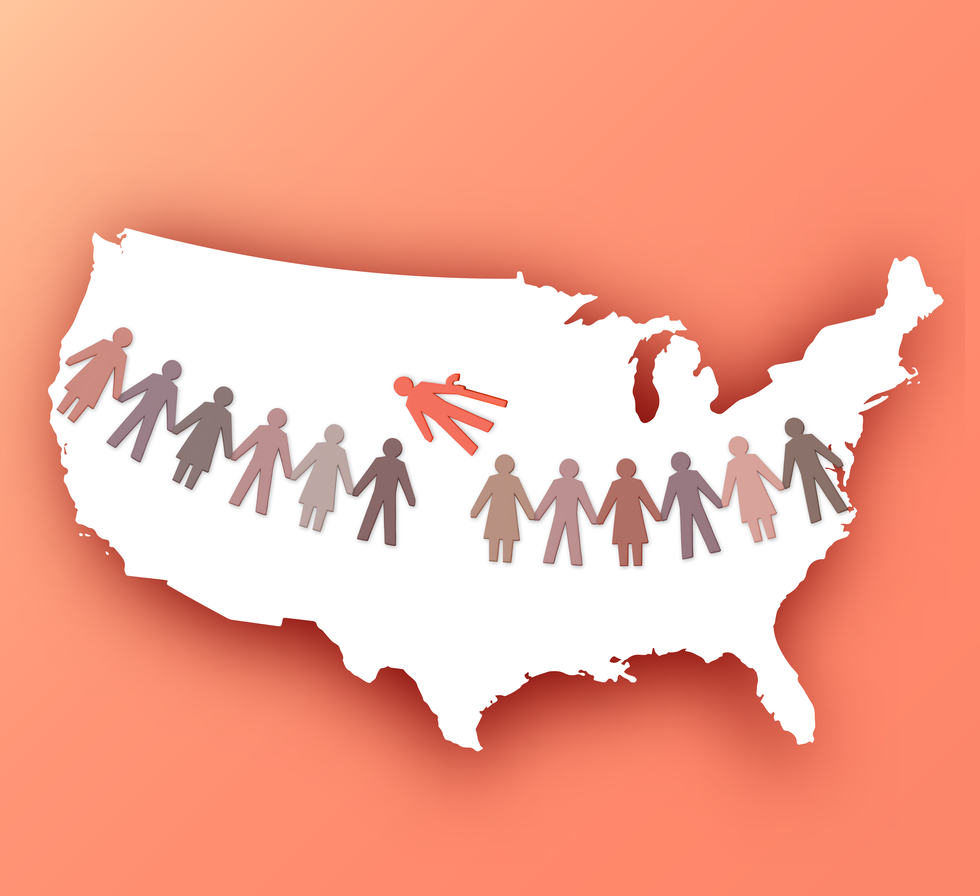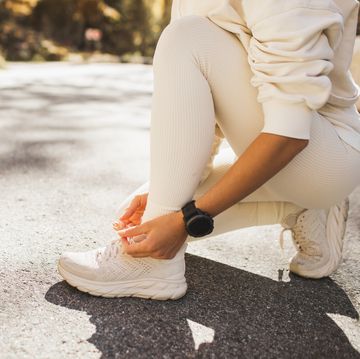From the 80-year-old Frenchmen who put on ties and blazers to walk their dogs to groups of silver-haired Vietnamese women in silky pants doing tai chi at dawn, it seems like other cultures do aging a lot better than we Americans do. Becca Levy, PhD, is a professor of epidemiology at Yale School of Public Health and professor of psychology at Yale University who has spent a lot of her career researching cultural mindsets around aging and its impact on longevity. Her new book, Breaking the Age Code, explores deeply embedded age belief systems across cultures and how those differences can inform life spans and health spans.
Here are some lessons we’ve learned from Levy’s research:
1. Treat your elders like rock stars rather than burdens
We have a lot to learn from the Japanese and other Asian and South Asian cultures, which, unlike Americans and certain Northern European cultures, celebrate their elders rather than put them out to pasture.
More From Oprah Daily

Levy: “When I was in graduate school, I had the opportunity to travel to Japan on a National Science Foundation fellowship. What I witnessed there is how differently the culture treats its oldest members. I noticed that in many ways, aging was celebrated and honored—from the national holiday that honors the aged to the reality shows on TV that treat centenarians and supercentenarians (those 110 and older) like rock stars. Considering that Japan had the longest life span in the world at the time, it made me wonder if the way a culture treats its oldest members could impact our life span. This sparked my interest in conducting scientific studies to see if cultural beliefs about aging impact our health and longevity. It set me on a course to explore this in a deeper way.”
2. A positive outlook on aging can add years to your life, regardless of gender, race, class, and socioeconomic and cultural differences
A study called the Ohio Longitudinal Study of Aging and Retirement, done in Oxford, Ohio, between 1977 to 1995, famously tracked beliefs around aging among 433 participants. In her research, Levy took it a step further, making the connection between attitudes and functional health.
Levy: “That study [provided] a great baseline for age beliefs. The original investigator reached out to everyone in the town of Oxford who was 50 and older and asked them about their age beliefs. It is one of the richest perspectives on aging in America, but it didn’t have longevity information. When I heard about this study, I worked with the investigator to add mortality data collected from the National Death Index to the participants’ age beliefs. I was able to determine that those participants who had taken in more positive views of aging from their culture were living, on average, seven and a half years longer than those who had taken in more negative views of aging—beyond the influence of gender, race, socioeconomic status, age, loneliness, and health. Positive age beliefs across all types of people conferred a better survival advantage or longer longevity on average than low cholesterol, low blood pressure, low body mass index, and avoiding smoking.”
3. It’s not all downhill when it comes to brain health
We tend to think of our brains as a diminishing asset and aging as a race against the cognitive clock. In fact, there are certain parts of the brain that don’t just decline but actually get better with age. Functionality, such as abstract thinking or pattern matching—this thing we anecdotally call wisdom—has a neurological signature and actually strengthens in midlife.
Levy: “In our studies we have found that those with more positive age beliefs also performed better physically and cognitively. In fact, lots of types of cognition improve with age. Metacognition, or thinking about thinking, is one of them, and positive age beliefs can reinforce that even more. My team also found that positive age beliefs helped people recover from injuries and periods of depression. We also saw that people born with the APOE4 gene, which is the risky gene for Alzheimer’s disease, were 47 percent less likely to develop dementia if they had taken in more positive age beliefs from their culture.”
4. Ageism in the U.S. is literally killing us
In the U.S., we have such heavy strains of ageism not just in the workplace but in the culture at large. We are now coming to understand that systemic ageism and the loss of relevance, purpose, and community impact physical health as well as mental health. The good news is, you can change your attitude at any age.
Levy: “There is no question that we have deep structural ageism or discrimination and negative stereotyping against older persons. It’s everywhere—in advertisements, in social media, in the anti-aging industry, and even in some of our educational institutions and books read to young children. The World Health Organization identifies ageism as one of the most prevalent and accepted forms of prejudice in the world. Ideally, we will be able to confront and overcome this ageism with such actions as promoting positive aging in our educational systems. Until this happens, it is important to develop skills to overcome negative age beliefs. Fortunately, I have found that people at any age can strengthen their positive age beliefs.”
5. Change in attitude starts with awareness
In order to begin to address ageism in our culture, we have to start with acknowledging how pervasive it is.
Levy: “[I developed the] ABC method to bolster positive age beliefs, which are evidence-based, health-promoting age belief tools. The A stands for increasing our awareness of the ageism around us and our own age belief that we have taken in from our culture. The B stands for blame or placing blame where blame is due, which involves recognizing when structural factors we can change, like ageism, may be impacting health, rather than aging itself. And the C stands for challenging ageism. Ageism operates in both subtle ways and overt ways with job opportunities, housing, voting rights, and more. We need to put a spotlight on the many dimensions of ageism and promote positive aging to improve health and create a more age just society.”
6. Starting a journal can increase your awareness about your own attitudes around aging
Taking note of all the cultural cues can help you understand how you absorb these messages, both consciously and unconsciously.
Levy: “Spend one week keeping an age belief journal. Write down all the age-related messages you take in, from everyday conversations to advertising on social media. At the end of the week, write down whether the messages depict negative images of aging or positive images of aging. For the negative images, try to think about whether a more positive image of aging could have been presented. Also note the absence of messaging about older people. If you watch a movie and all the characters are under the age of 25, write that down, because we know that the absence of members of a group can lead to marginalization. We have found that this process can increase our awareness of both the negative age beliefs and positive age beliefs around us, which is the first step to strengthening our own positive age beliefs.”
7. Not all people age equally
Identifying your older role models can inspire a change in mindset around aging. Keep a portfolio of diverse positive role models in your life, as well as in the media, history, literature. Who are the people who had dynamic older lives you have admired and see as influences on your own thinking about aging?
Levy: “In my own life, I have developed a portfolio that includes my grandparents and my parents, who continue to inspire me. My mother is a passionate immunologist who ran an innovative medical research lab and heads a chapter of Grandmothers for a Brighter Future, a group that organizes Get Out the Vote campaigns. My dad is a sociologist whose research with Vietnam veterans laid the groundwork for identifying PTSD, and who now works tirelessly as an adviser to younger researchers, including me. I also have a number of positive role models that I write about in my book, including the grandmothers in Zimbabwe who strengthen their communities’ positive age beliefs and promote mental health by listening and offering talk therapy with the Friendship Bench service to individuals of all ages in their community.”
8. We have the ability to grow and change at every stage of life
Neuroplasticity refers to the brain and the nervous system’s capacity to rewire itself—to create new neural pathways—in response to new inputs and learnings.
Levy: “Research is beginning to show that the neurons of older brains can succeed in making new connections. I have found in my research that older persons who have taken in more positive age beliefs show several advantages in brain measures, including lower levels of the Alzheimer’s disease biomarkers of plaques and tangles. If we care for and nourish our brain like other organs, we can each enhance our biological code as we age.”
Any content published by Oprah Daily is for informational purposes only and does not constitute medical advice, diagnosis, or treatment. It should not be regarded as a substitute for professional guidance from your healthcare provider.
Join Oprah and Peter Attia, MD, for a surprising and informative conversation about how to craft a road map for a longer, healthier life. Become an Oprah Daily Insider now to get access to this conversation on longevity and the full “The Life You Want” Class library.














